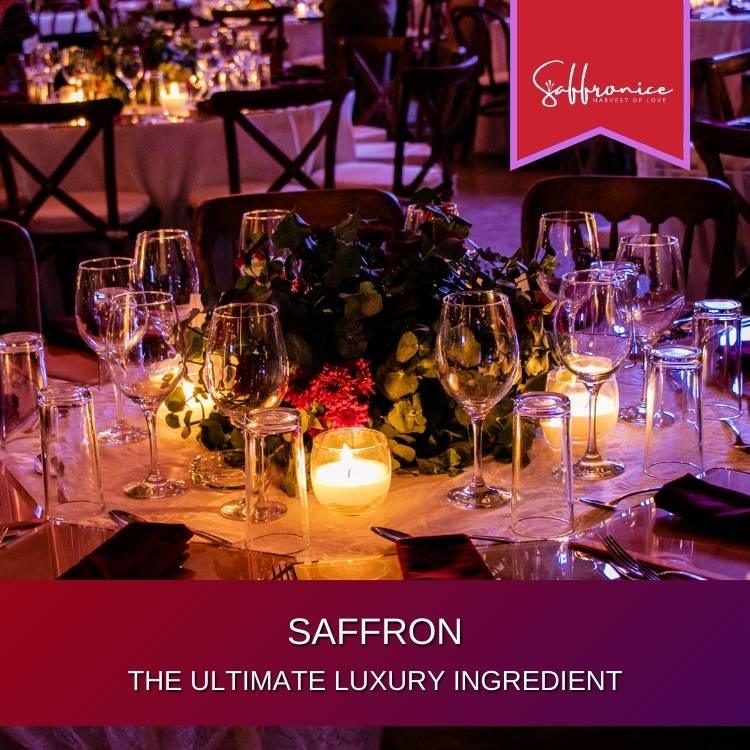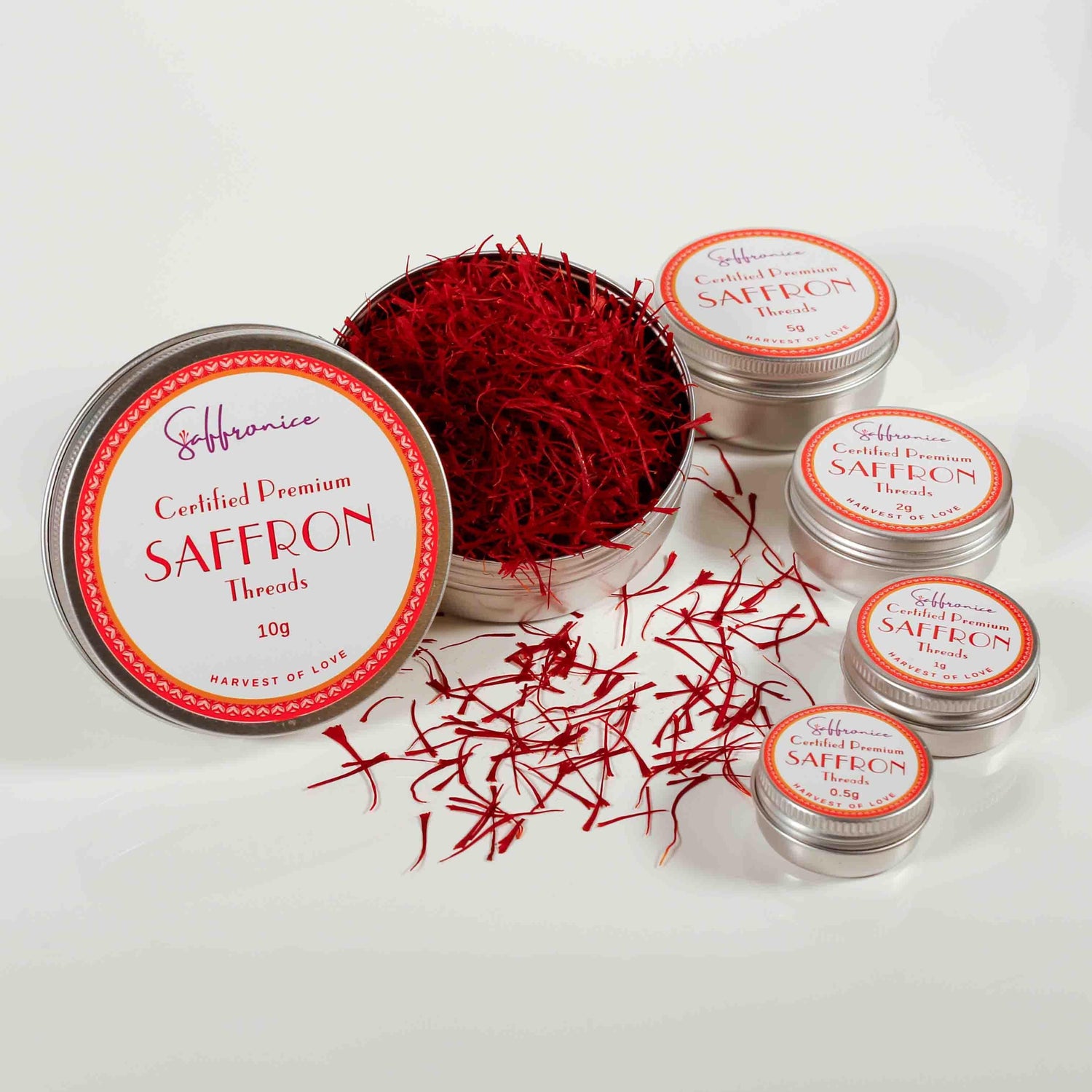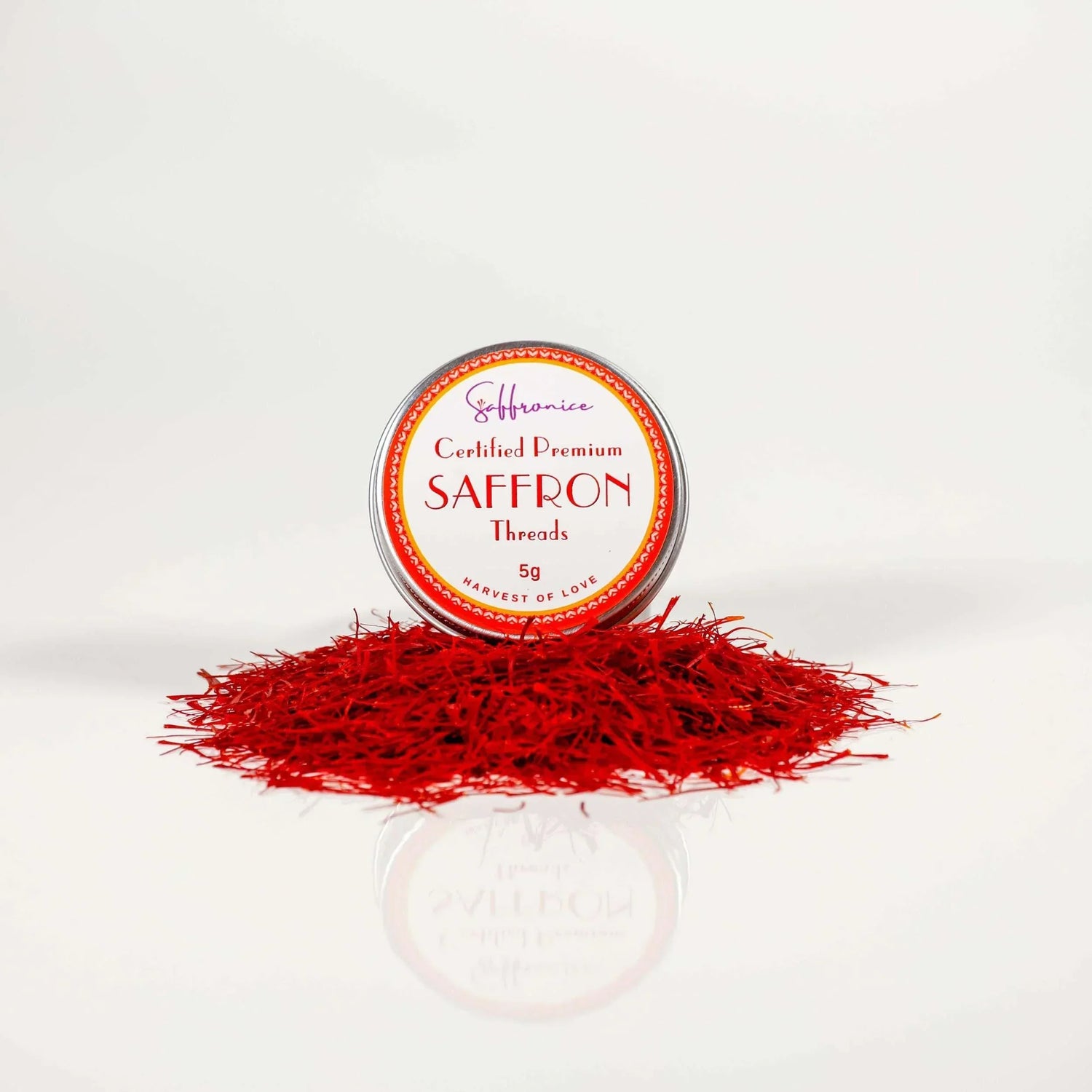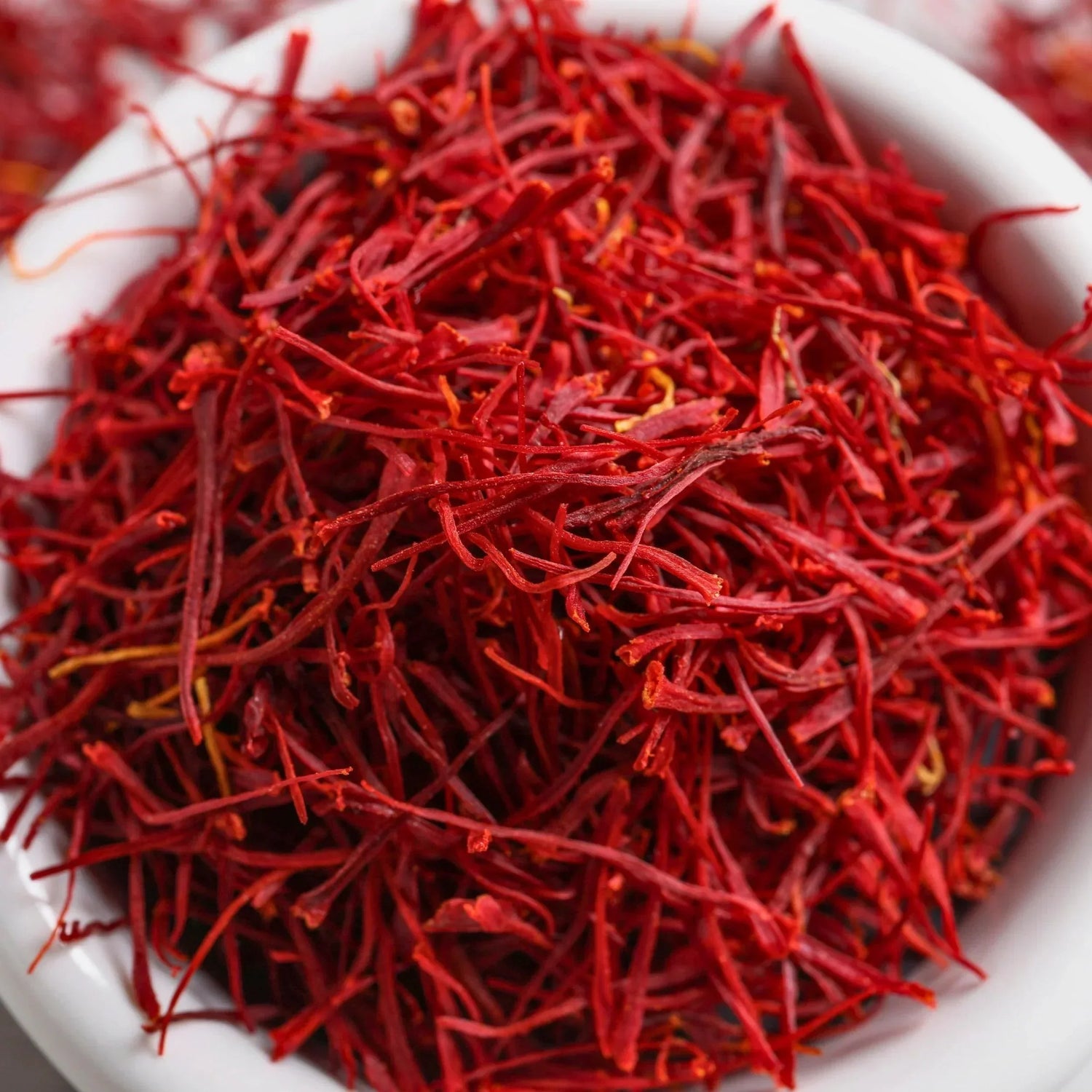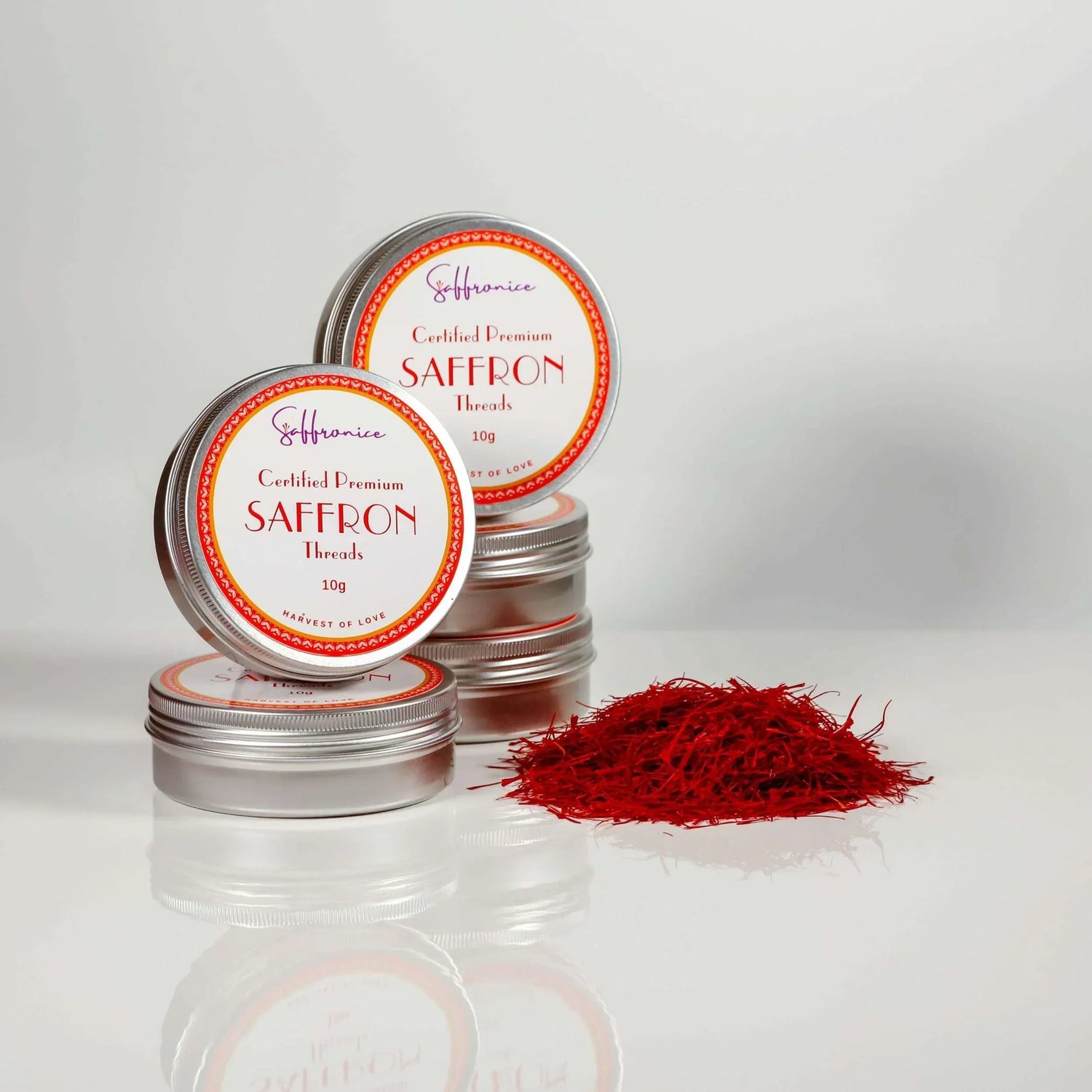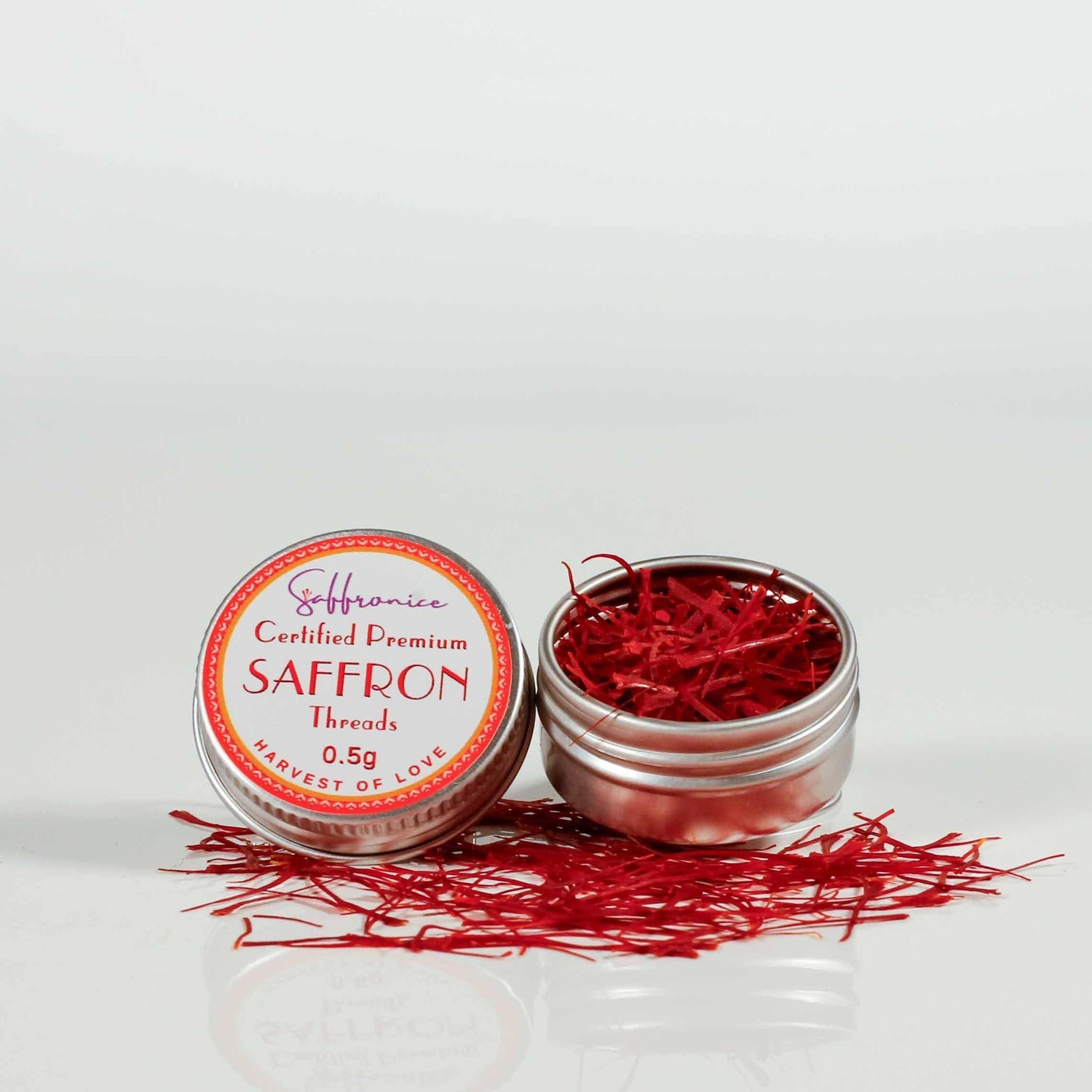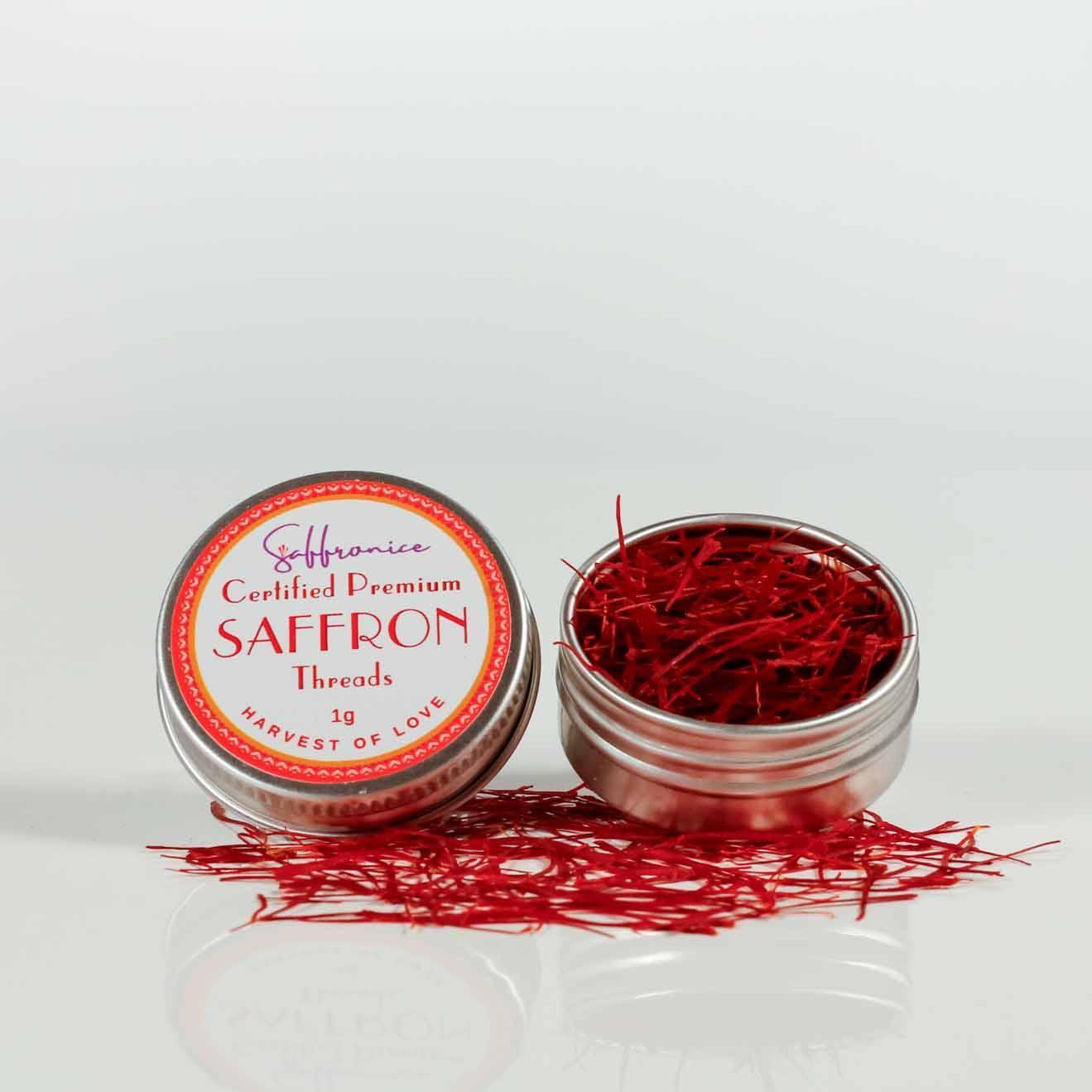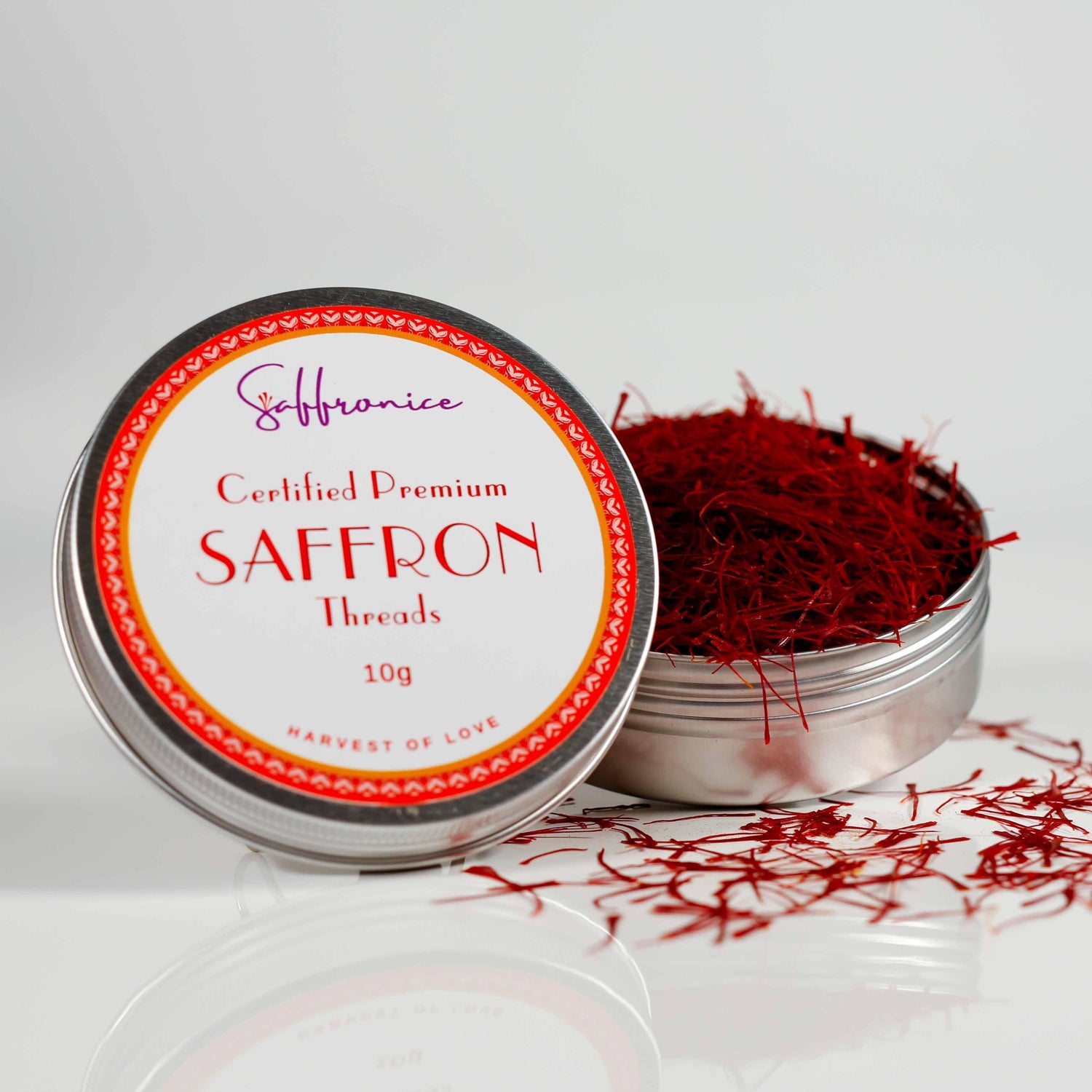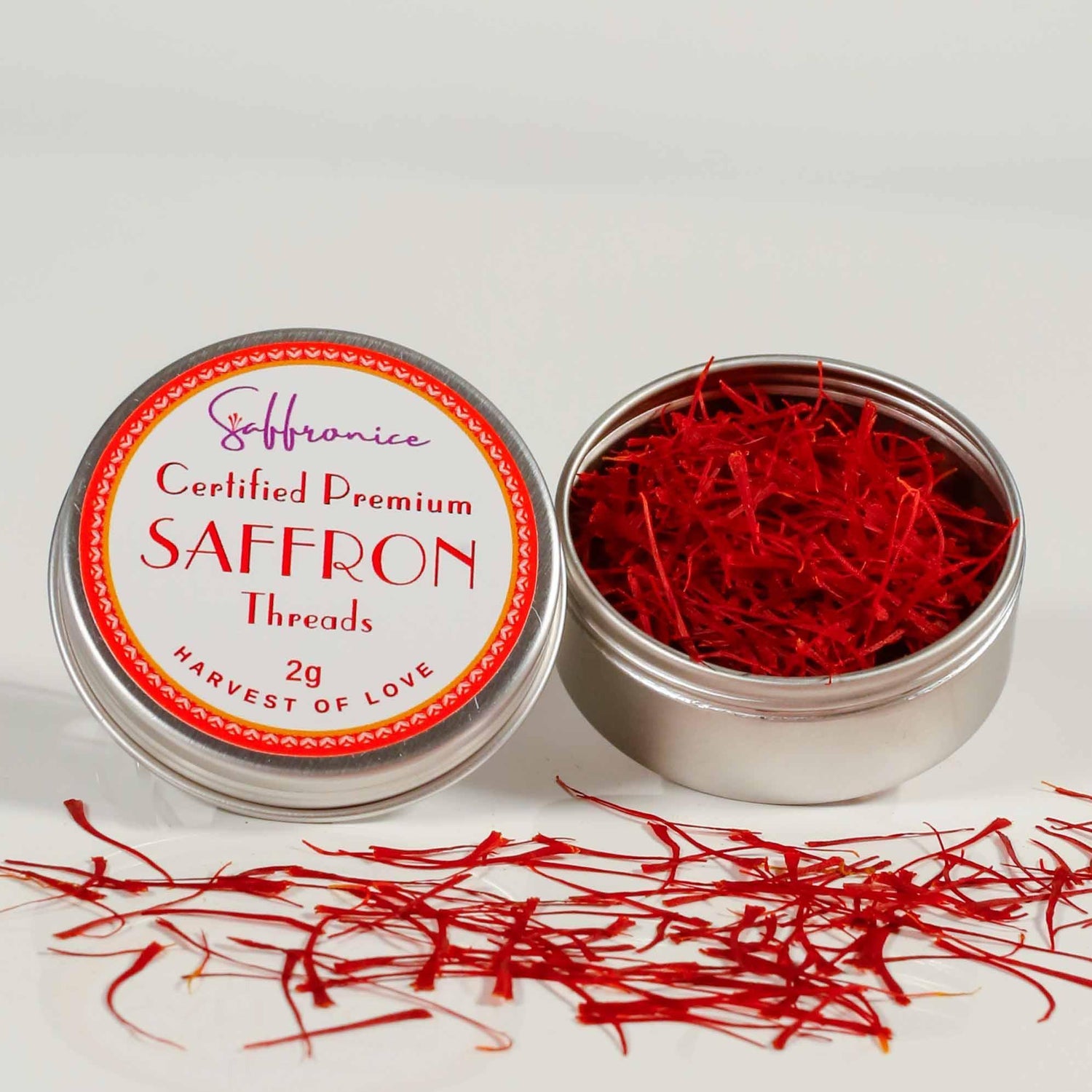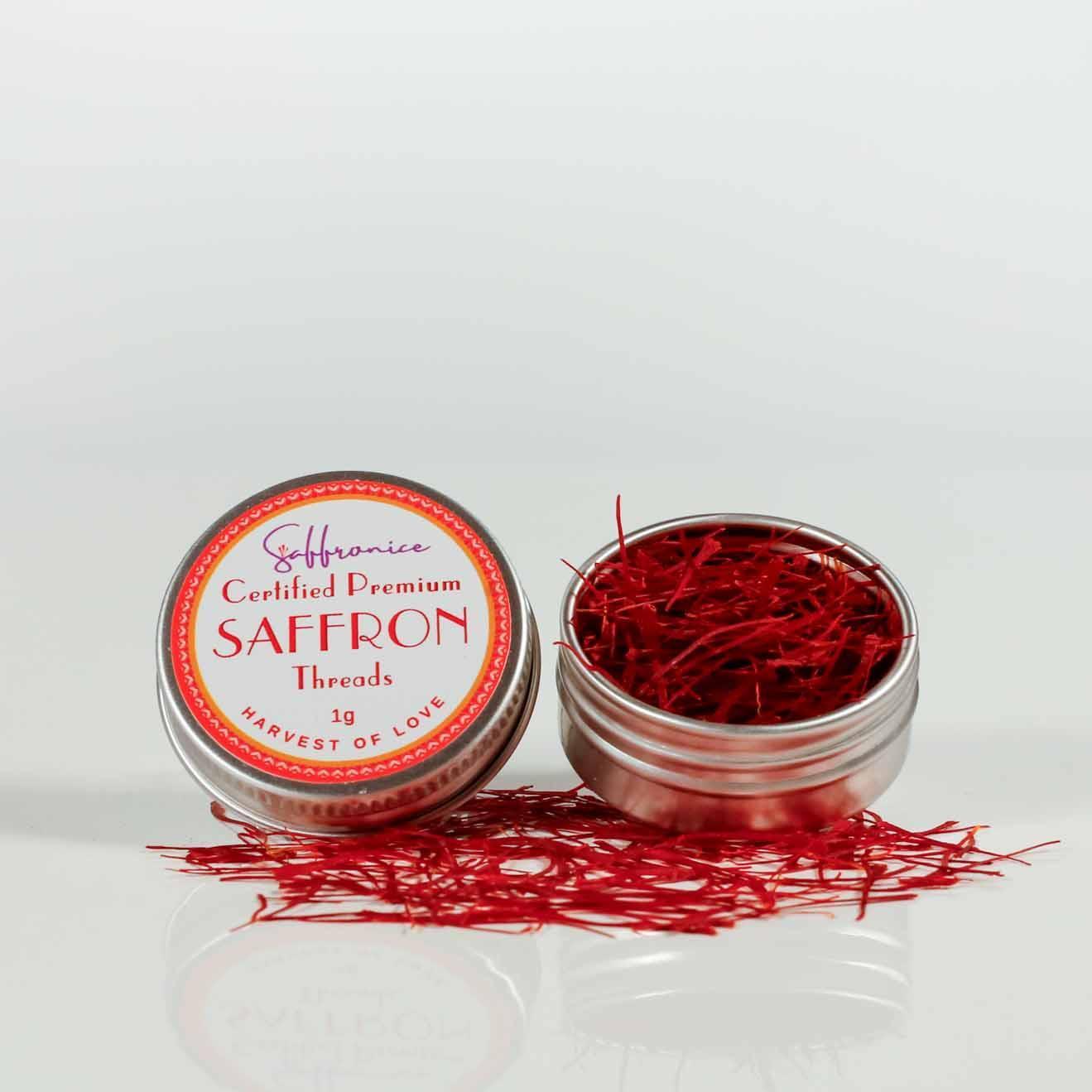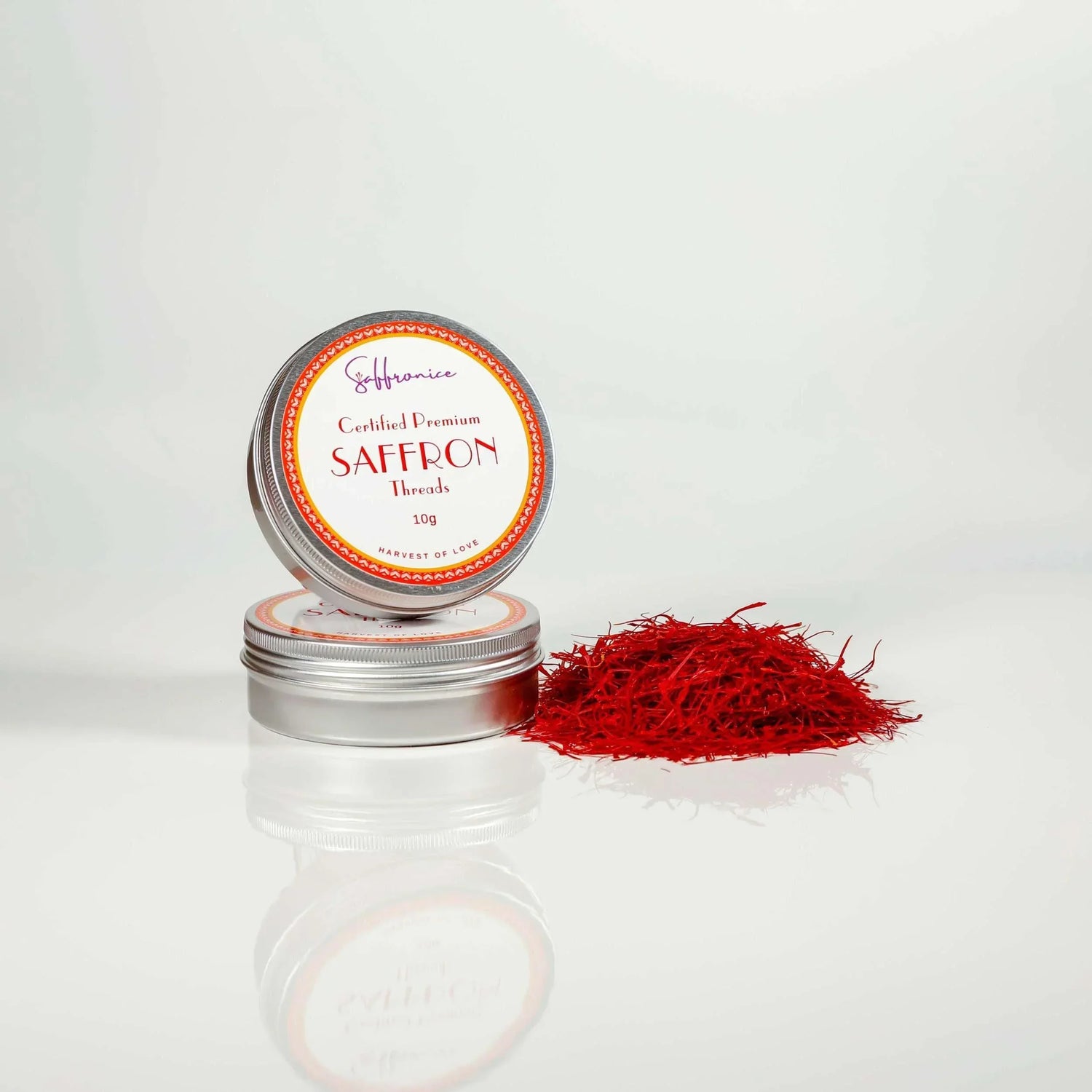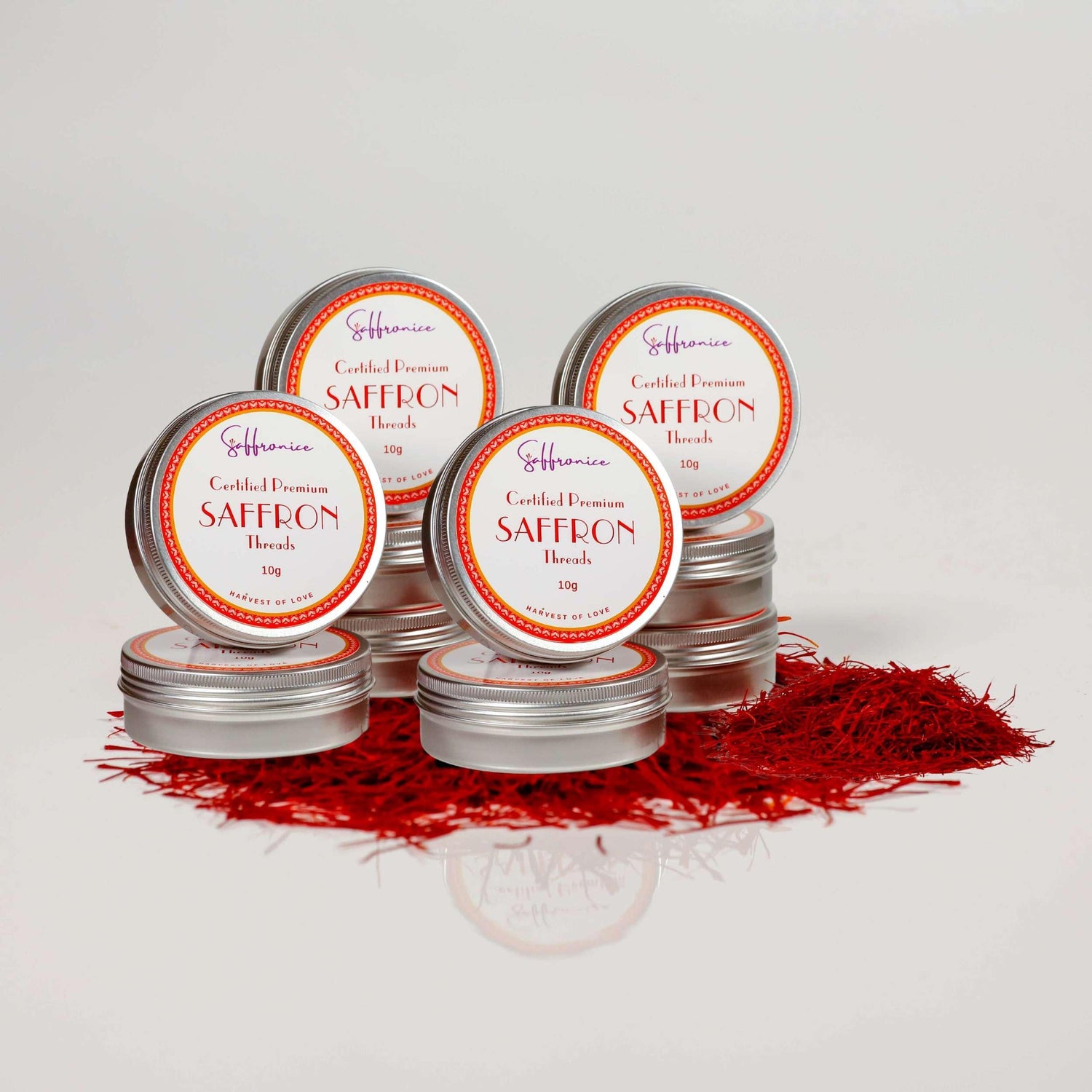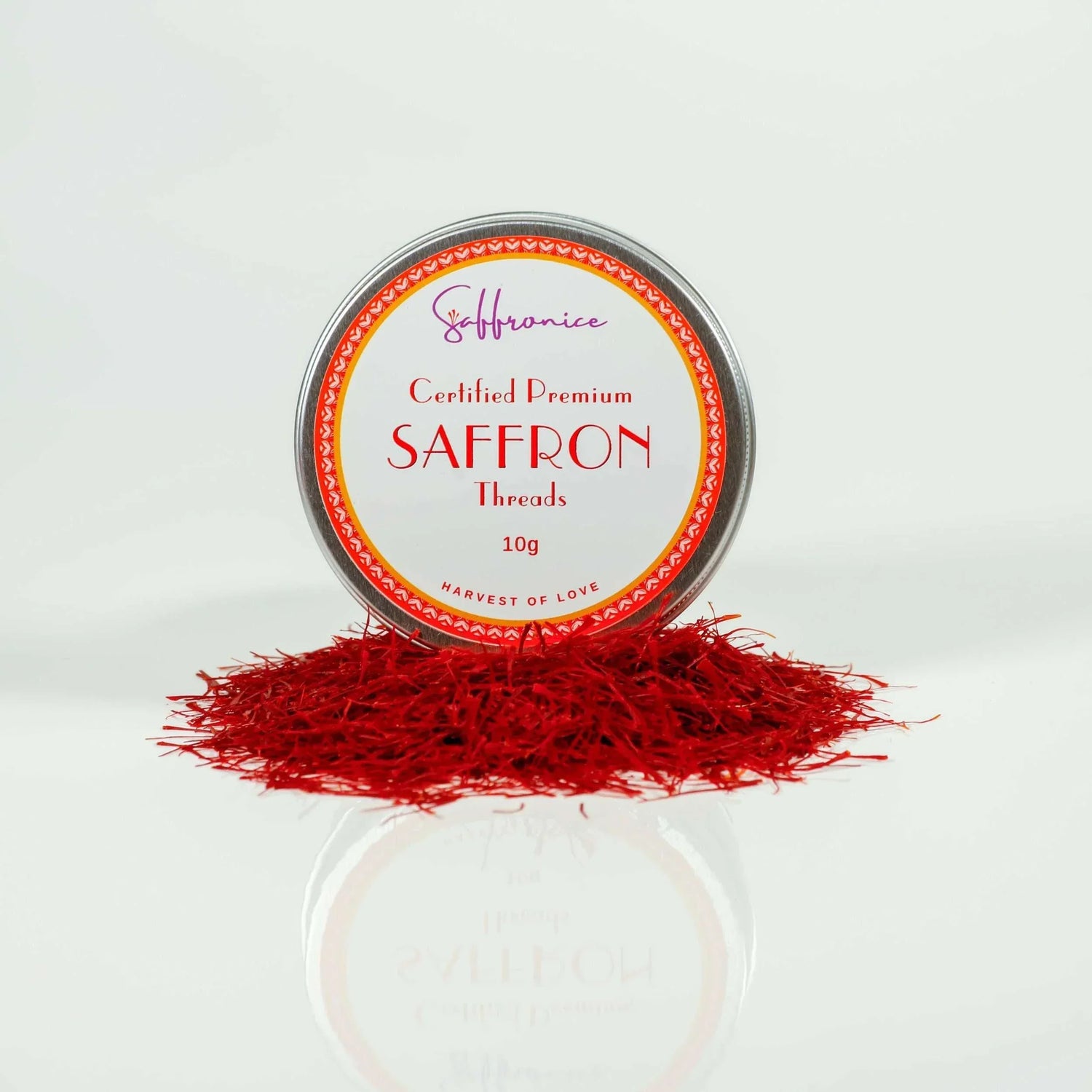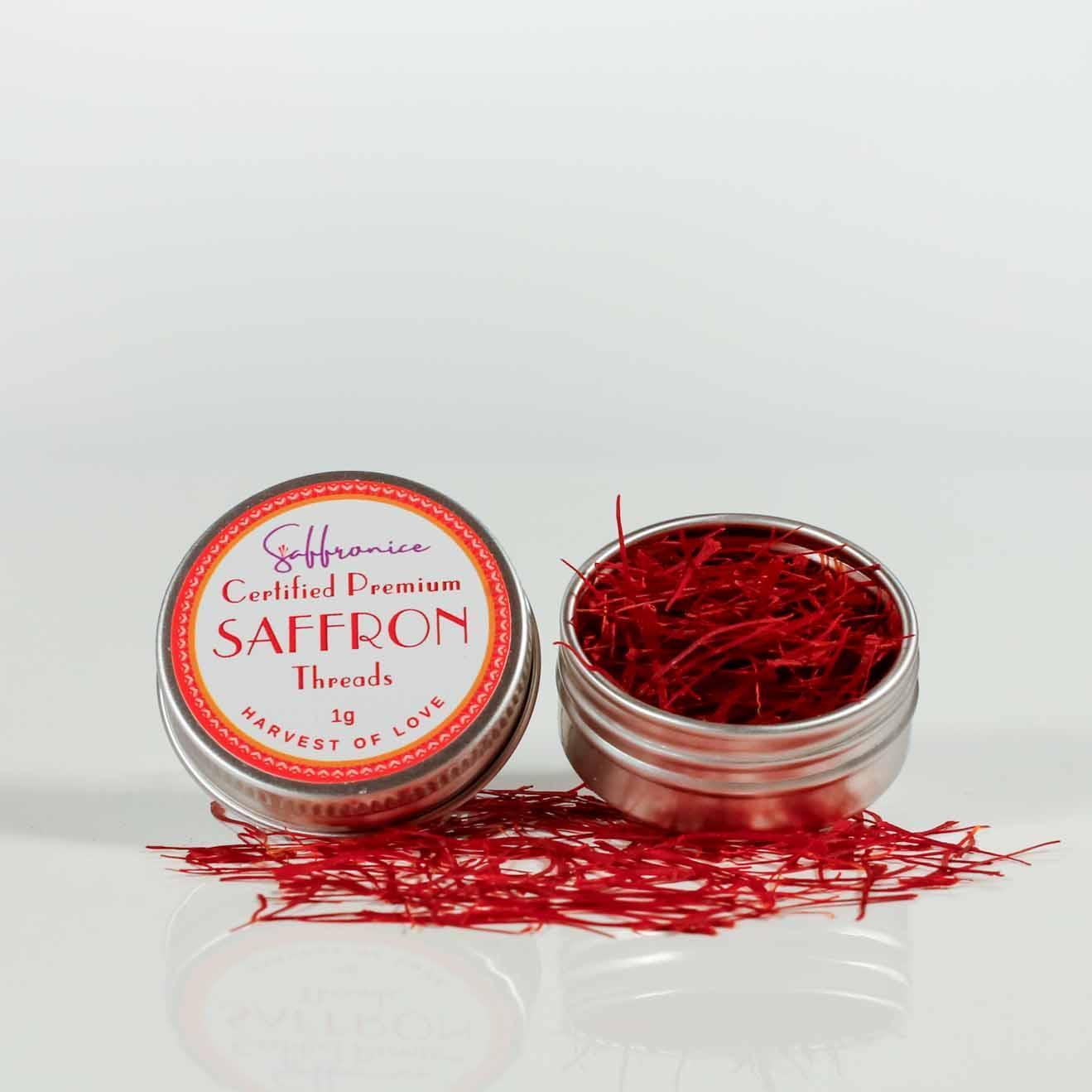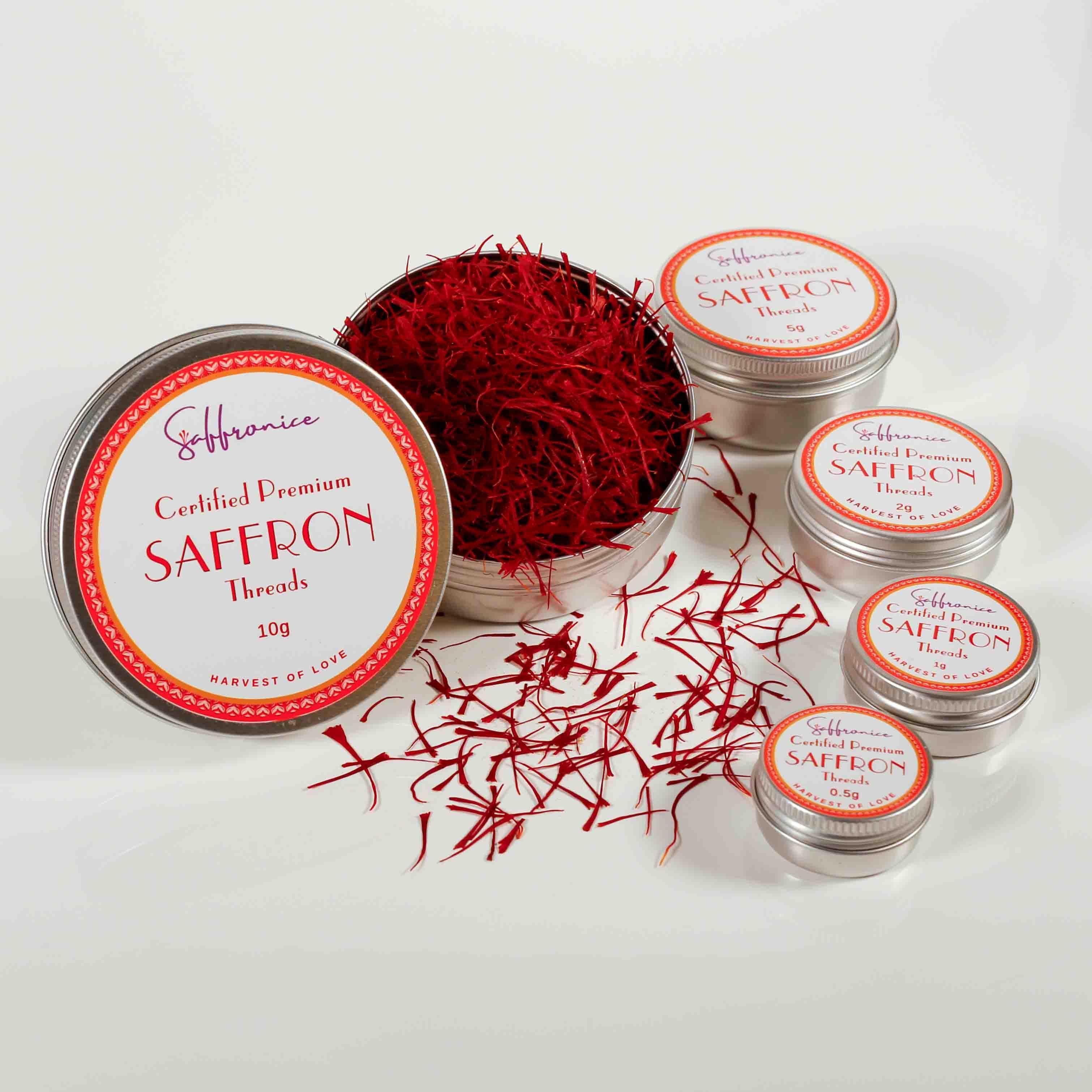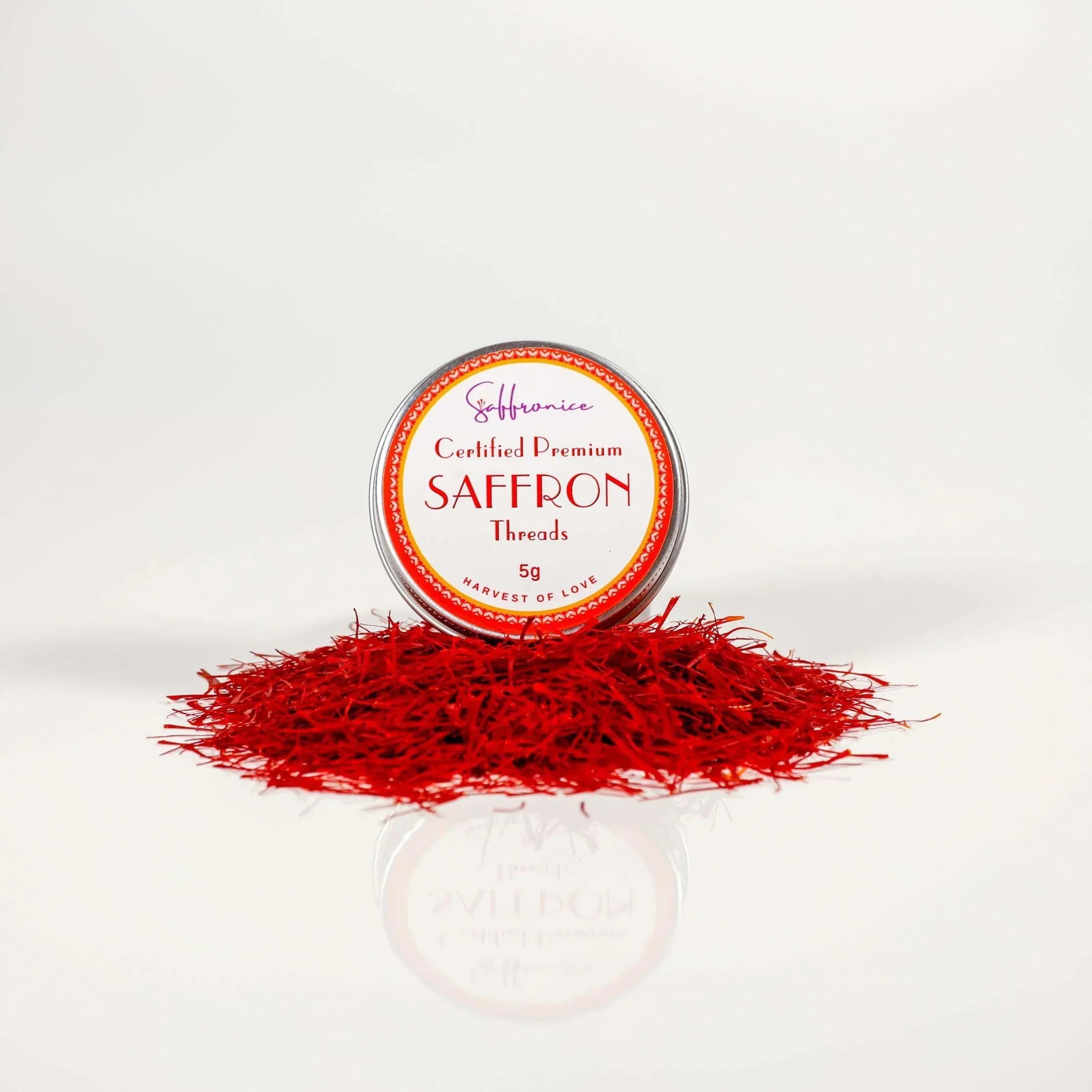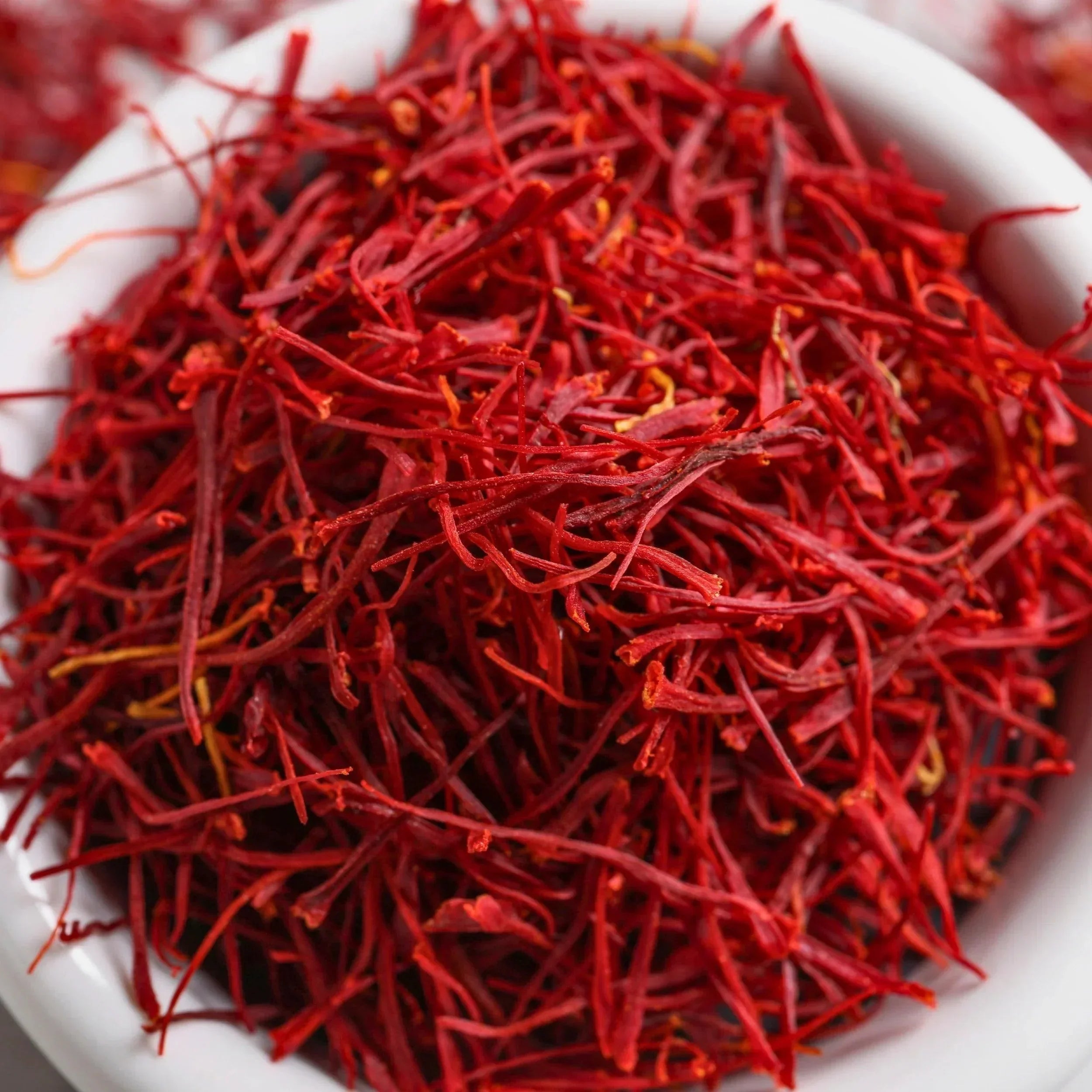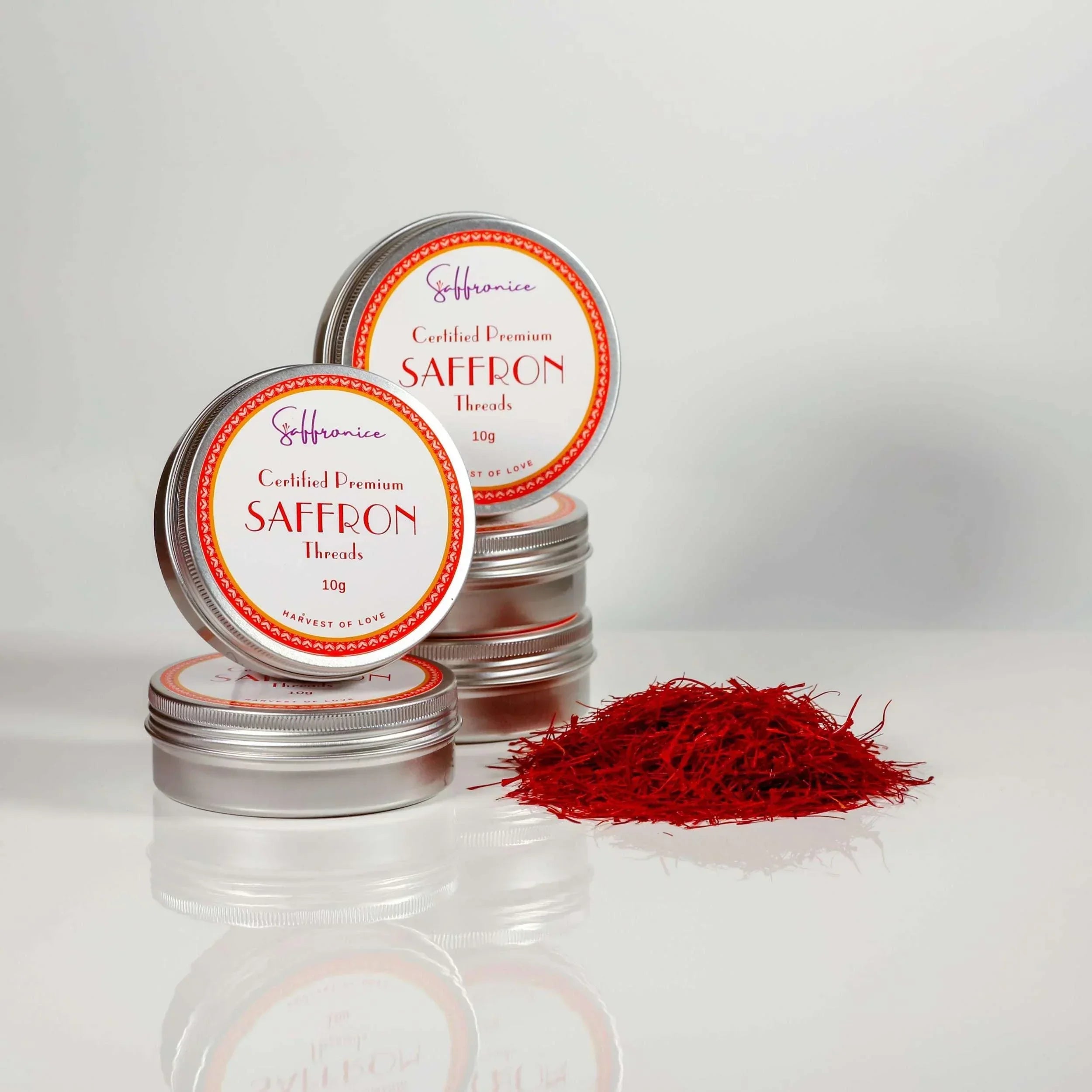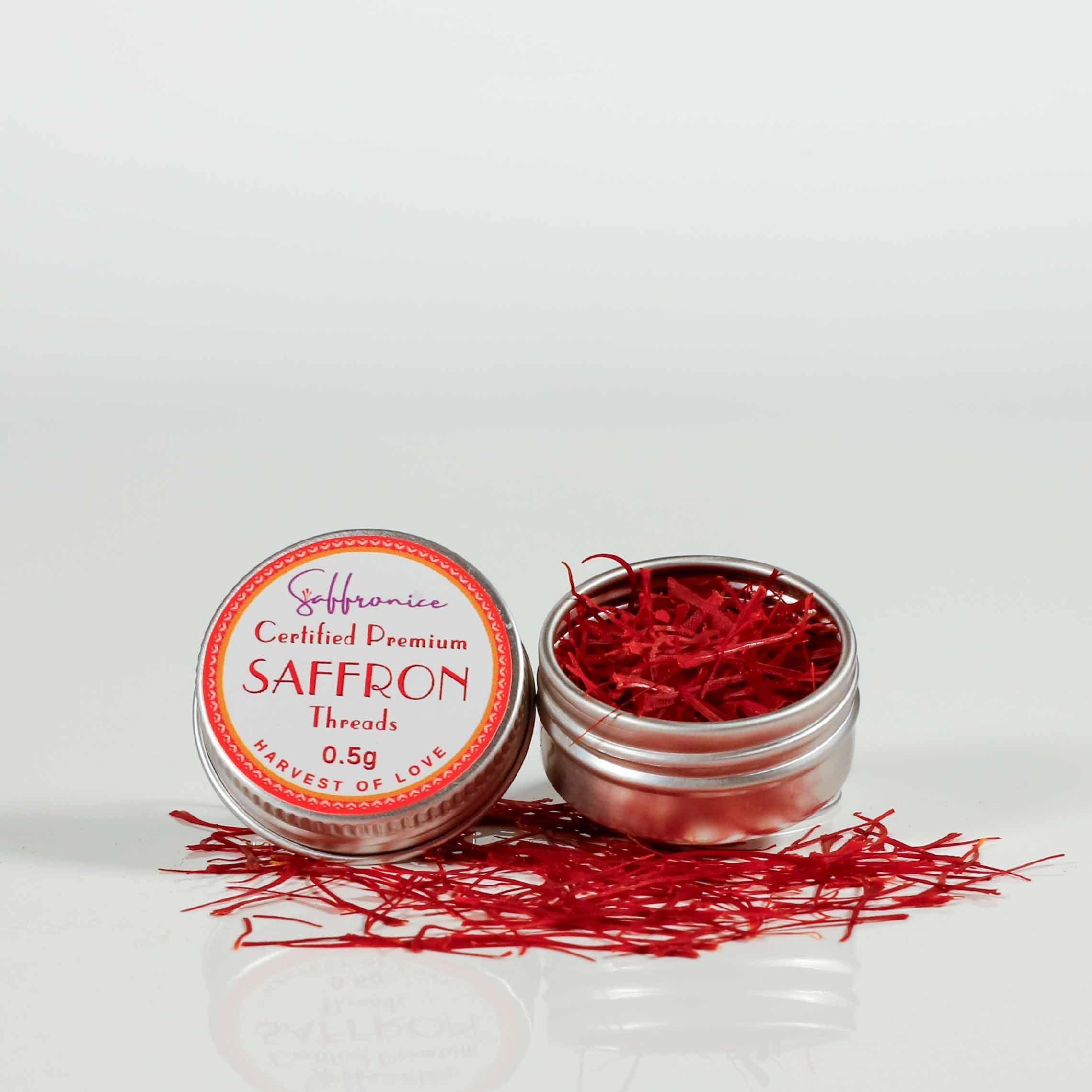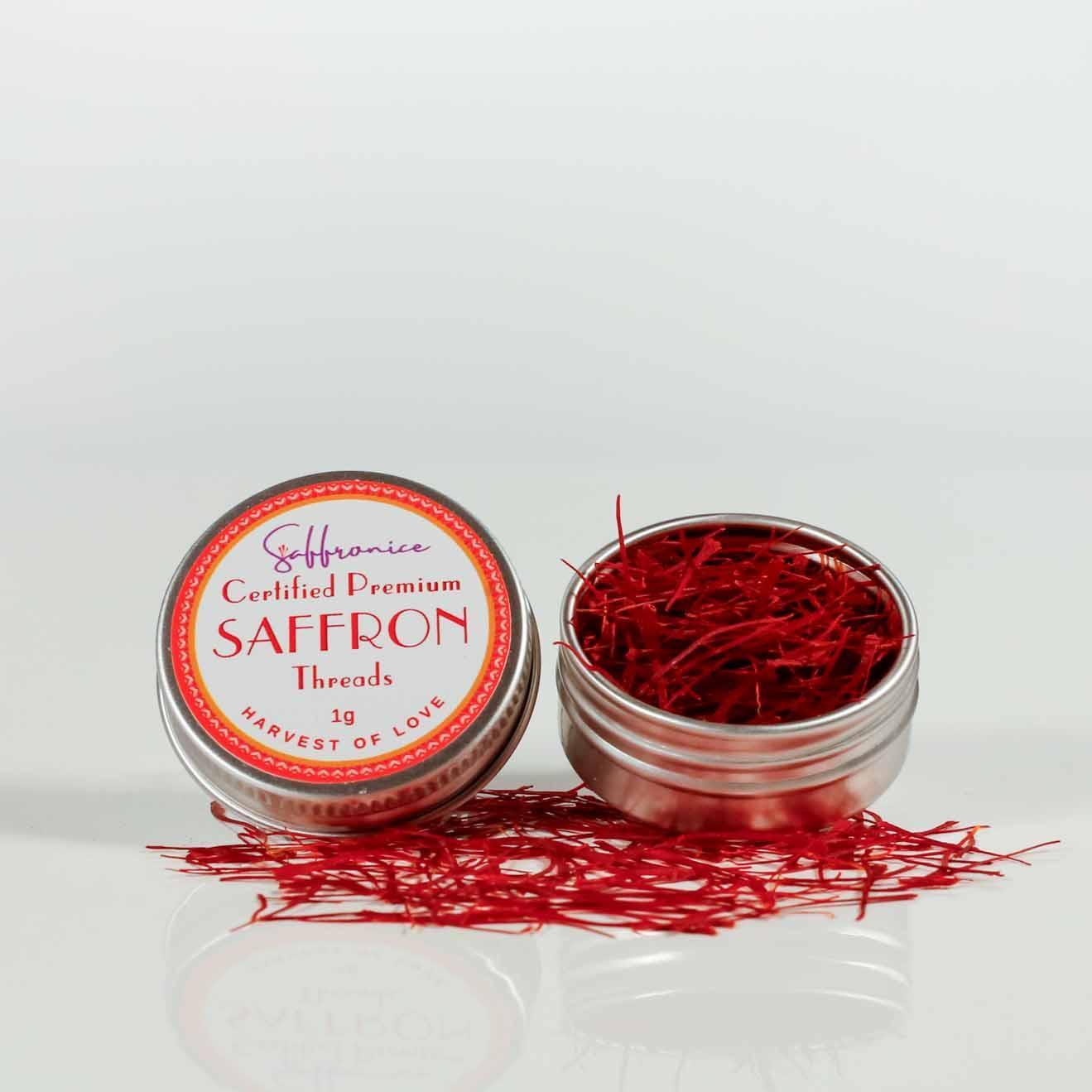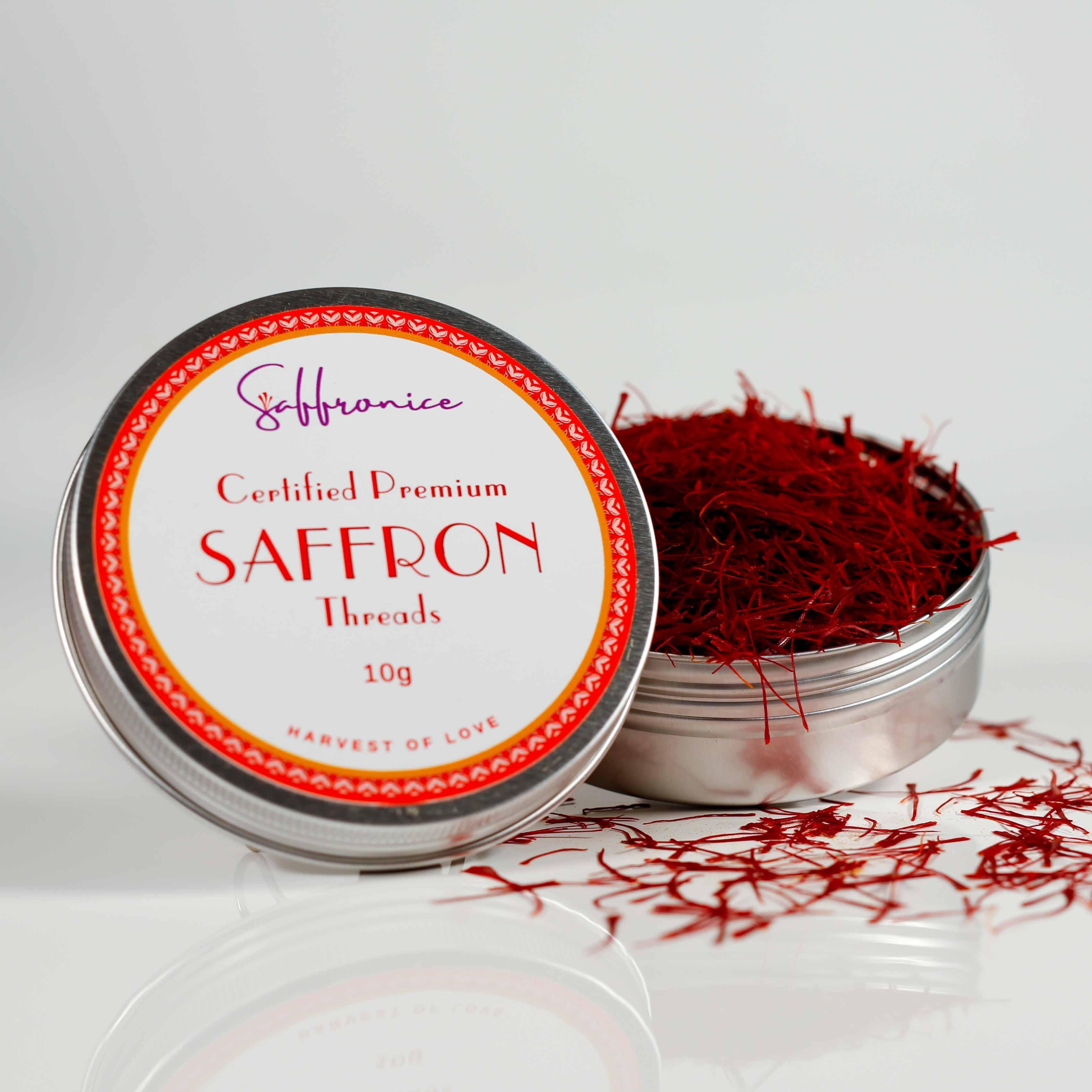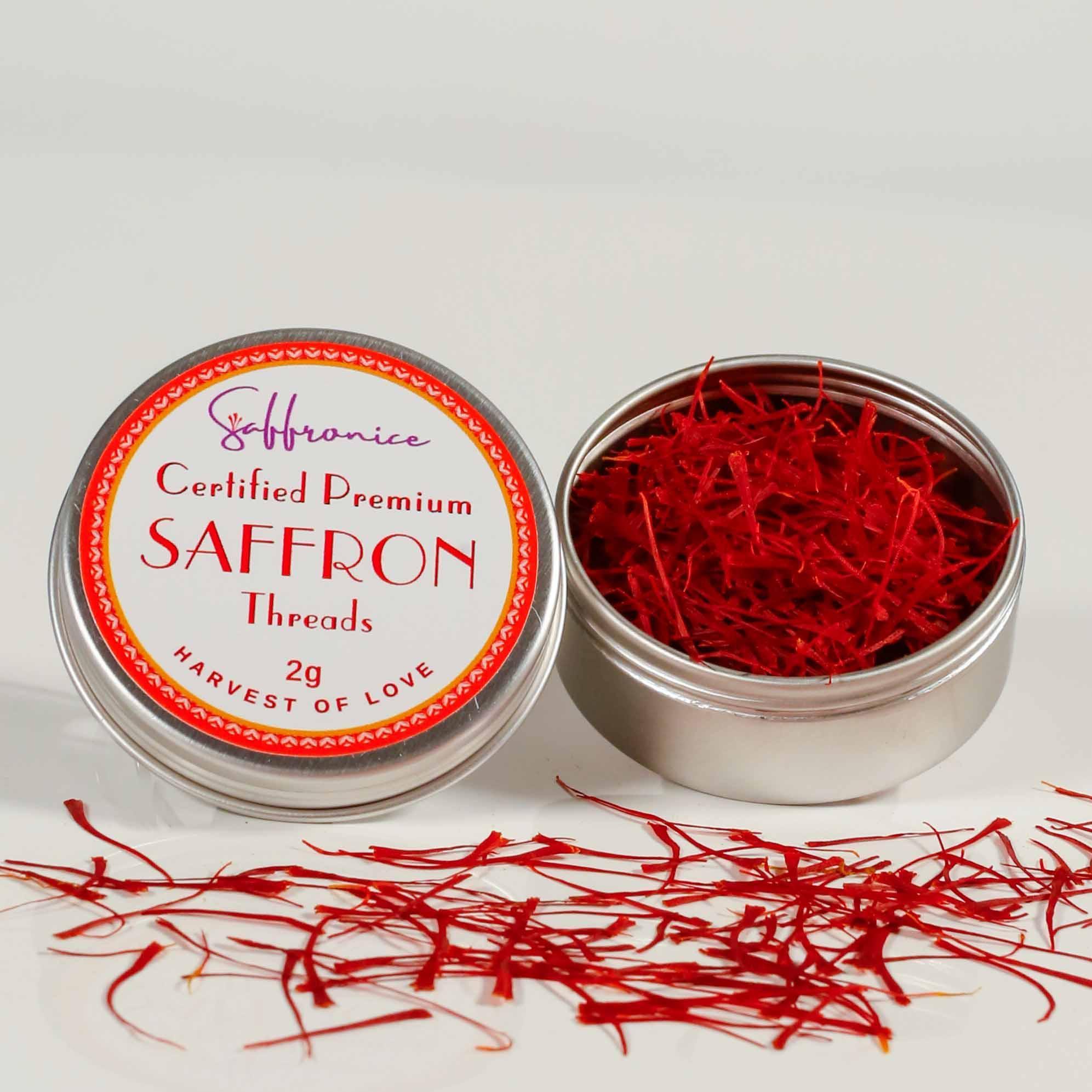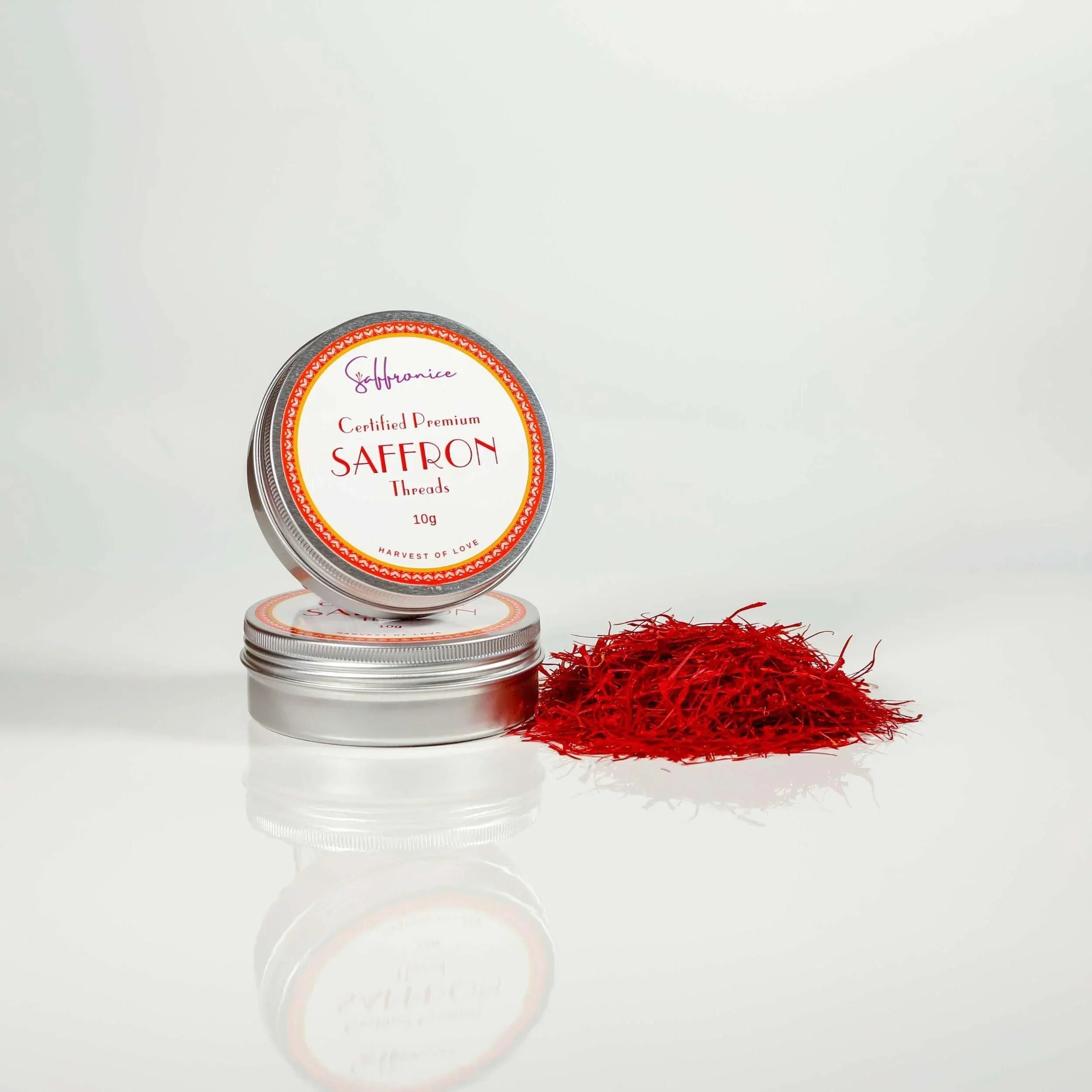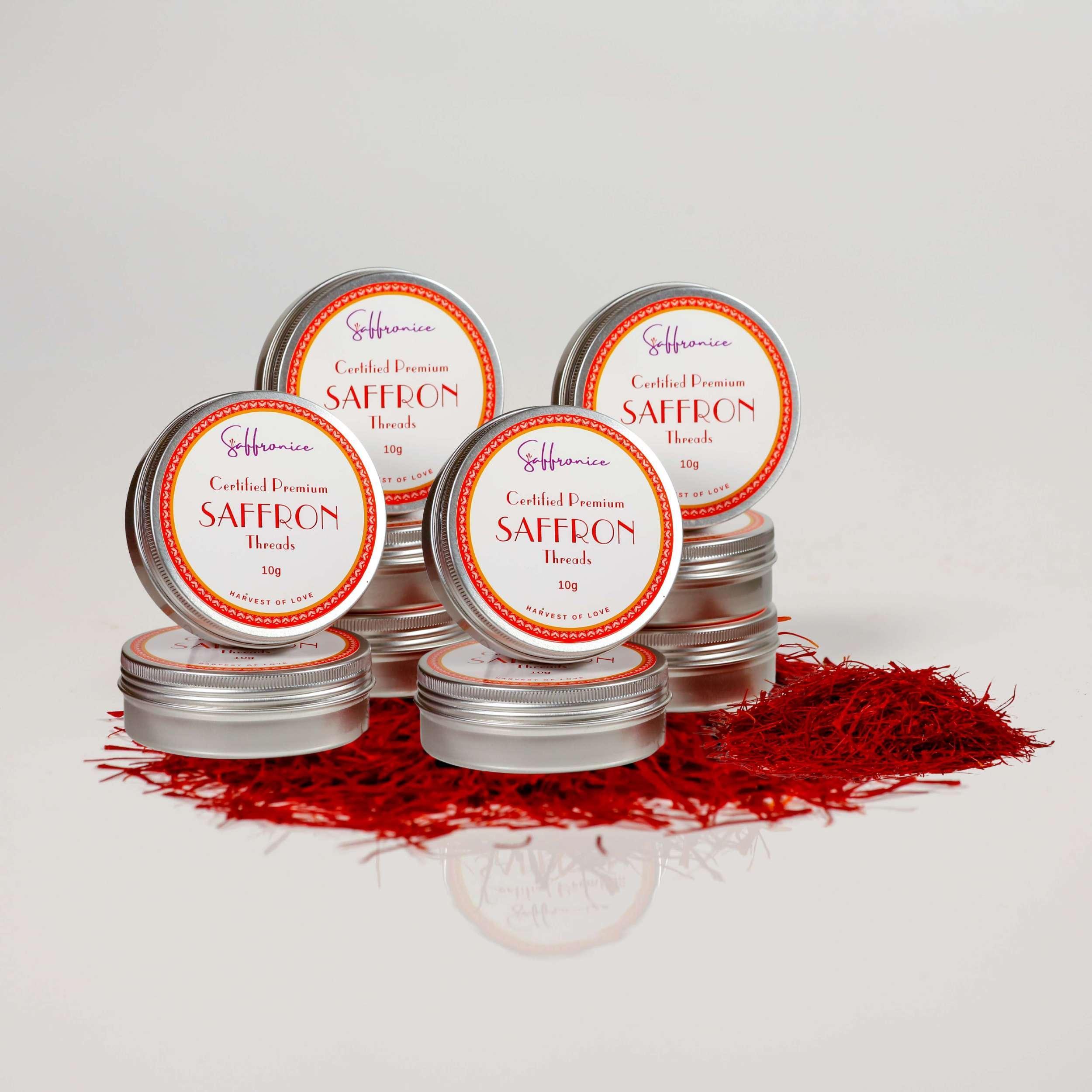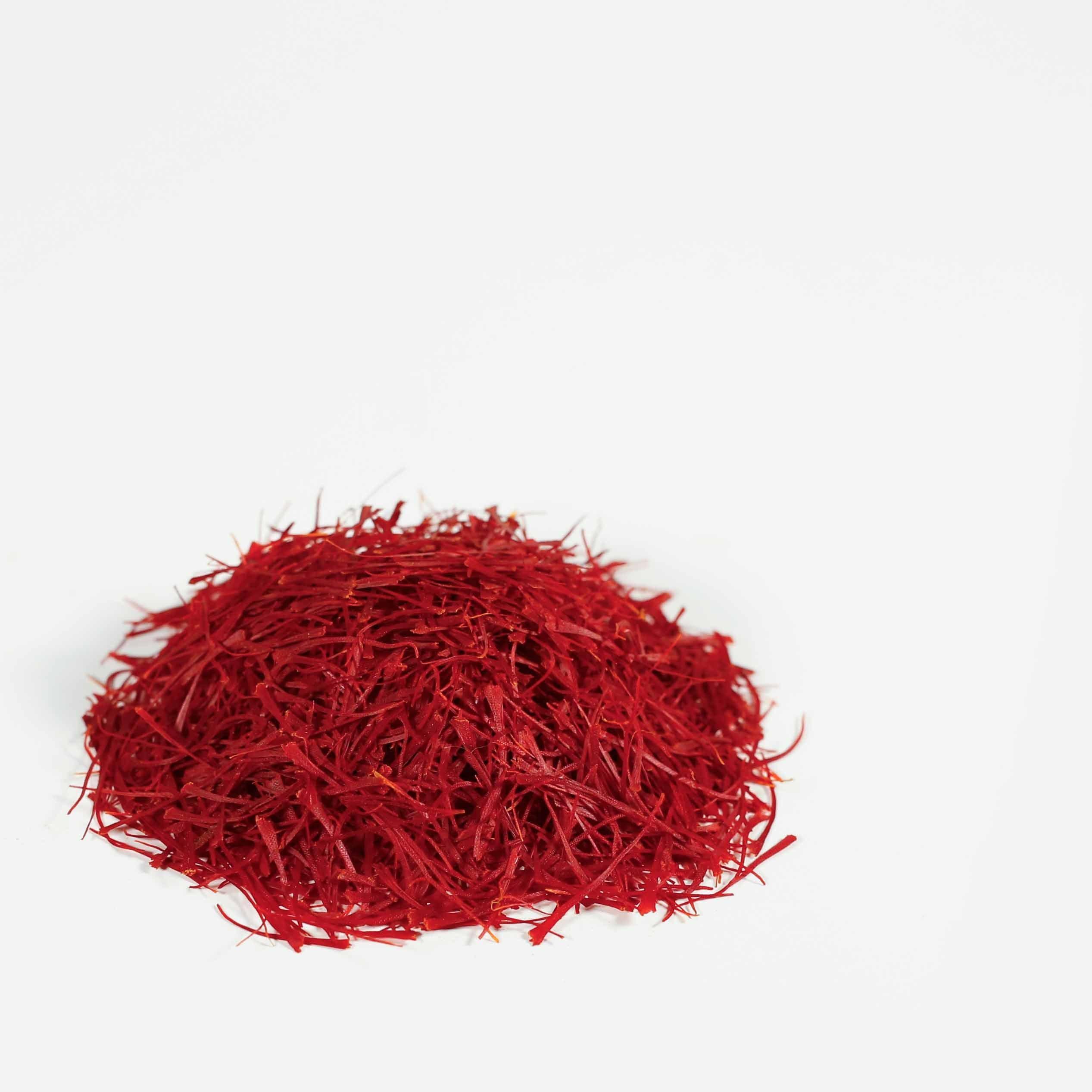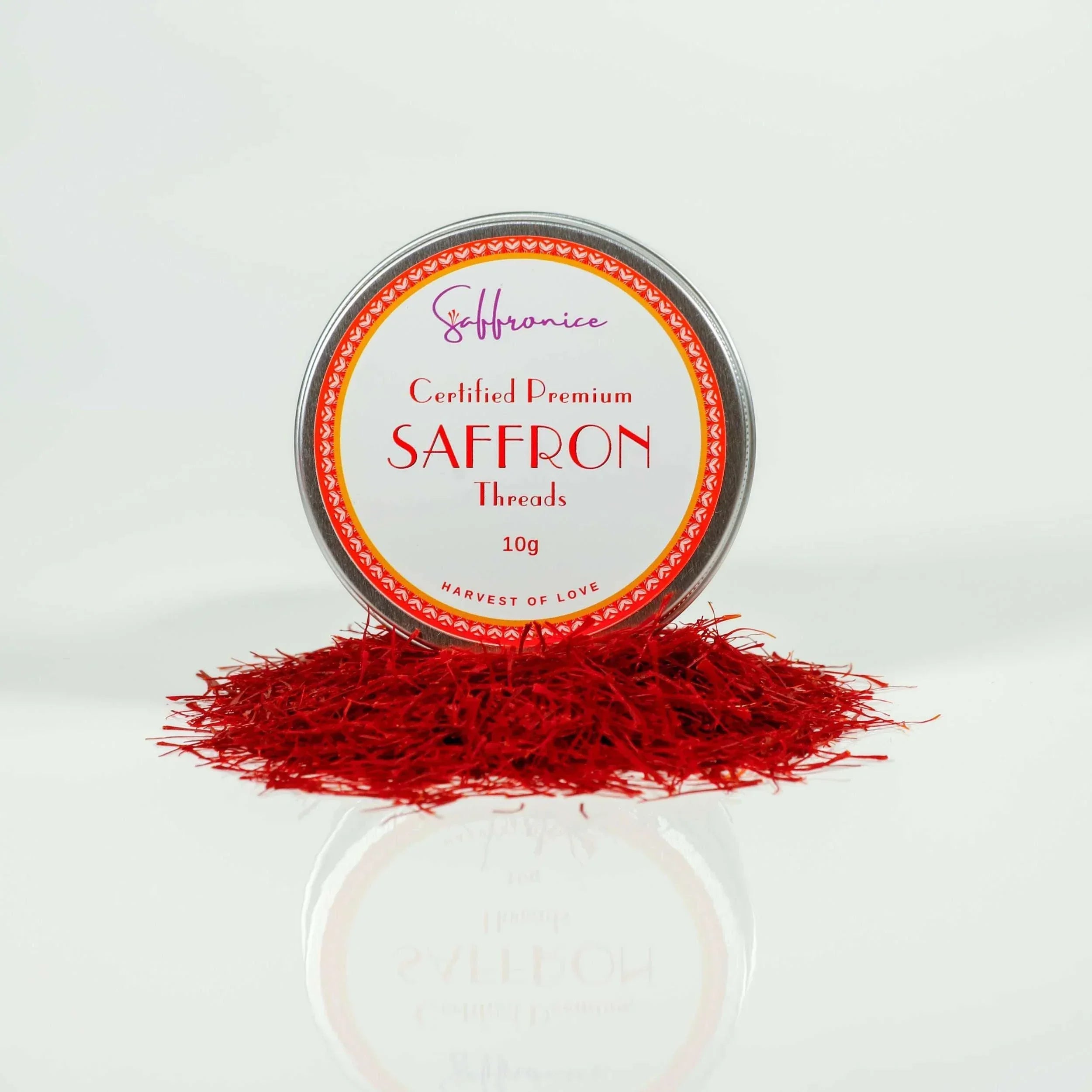Saffron, often referred to as red gold, has a rich history spanning over 3,000 years. Originating in ancient Persia (modern-day Iran), this luxurious spice has played a significant role in cooking, dyeing, perfumery, and traditional medicine.
In the realm of gourmet cuisine, saffron is much more than a mere spice; it symbolizes luxury and sophistication. Its unique flavor and aroma have the power to elevate dishes, making it a sought-after ingredient in upscale dining.
However, not all saffron is created equal. It's essential to know where to source high-quality saffron threads.
Key takeaway: Saffron is not just a spice but a symbol of luxury and sophistication in the culinary world.

The Allure of Saffron
Saffron, often referred to as 'red gold', earns this nickname due to its high market value and luxurious reputation. This precious spice comes from the stigmas of the Crocus sativus flower, a delicate bloom that needs careful attention during its growth.
Crocus Sativus: The Source of Saffron
The Crocus sativus flower blooms for a short time in autumn. Each flower has only three red stigmas, which must be handpicked early in the morning to maintain their quality. The process of harvesting saffron is labor-intensive and involves:
- Harvesting: Handpicking the flowers early in the morning.
- Stigma Separation: Carefully separating the red stigmas from the flowers.
- Drying: Drying the stigmas to develop their distinct color and aroma.
It takes thousands of flowers to produce just one pound of saffron, which is why it is one of the most expensive spices globally.
Importance of Handpicking and Quality
Handpicking ensures that each stigma is collected without damaging its delicate structure. This meticulous approach guarantees:
- Purity: Only the highest quality stigmas are selected.
- Flavor: Preserving the intense aroma and flavor unique to saffron.
- Value: Maintaining saffron's status as a premium luxury ingredient.
The painstaking effort required in saffron production underlines its exceptional value and enhances its reputation as a culinary treasure.

Saffron in Culinary Traditions Around the World
Saffron's exquisite flavor and vibrant color make it a cherished ingredient in various global cuisines. Its versatility shines through in iconic dishes from different cultures, each showcasing saffron's unique qualities.
Indian Biryanis
In India, saffron is synonymous with luxury and celebration. Biryani, a fragrant rice dish, often features saffron for its distinctive aroma and golden hue. A classic Hyderabadi Biryani combines basmati rice, tender meat, and a medley of spices, with saffron lending an unmistakable richness.
Spanish Paellas
Spain's culinary landscape would be incomplete without paella. This beloved dish from Valencia highlights the harmony between seafood, chicken, rabbit, and rice. Saffron is crucial in creating the dish's signature yellow color and imparting a subtle yet complex flavor that defines authentic paella.
Persian Rice Dishes
Persian cuisine celebrates saffron as a symbol of hospitality and tradition. Tahdig, known for its crispy golden crust, is enhanced by saffron-infused rice that offers both visual appeal and depth of flavor. Another favorite, Joojeh Kabab, pairs saffron-marinated chicken with rice for a delightful contrast.
Italian Risottos
In Italy, Risotto alla Milanese stands out as a testament to saffron's elegance. This creamy rice dish melds the nutty taste of Arborio rice with the earthy notes of saffron. Often served alongside osso buco (braised veal shanks), this risotto exemplifies northern Italian culinary artistry.
Moroccan Tagines
Moroccan cuisine embraces saffron in the preparation of aromatic tagines. These slow-cooked stews blend meat or vegetables with spices like cumin, coriander, and cinnamon. Saffron imparts a distinct warmth and color to dishes such as Chicken Tagine with Apricots, creating layers of flavor that epitomize Moroccan cooking.
Saffron’s role in these diverse culinary traditions underscores its universal appeal and ability to transcend cultural boundaries. Each dish not only highlights its luxurious essence but also pays homage to centuries-old cooking practices where saffron continues to reign supreme.
Gourmet Experiences with Saffron Infused Dishes

Examples of Gourmet Meals Featuring Saffron
Saffron's luxurious nature makes it a star in many gourmet meals. Here are some exquisite examples:
- Saffron Risotto with Truffles: This dish combines the earthy richness of truffles with the distinctive aroma of saffron, resulting in an indulgent and creamy experience.
- Bouillabaisse: A traditional French seafood stew where saffron enhances the broth's depth, adding a touch of elegance to every spoonful.
- Lobster with Saffron Sauce: The subtle sweetness of lobster pairs beautifully with a luscious saffron-infused sauce, creating a meal fit for royalty.
Techniques for Infusing Saffron into Dishes
To make the most of saffron's unique flavor and color:
- Soak in Warm Liquid: Before adding saffron to any recipe, soak it in warm water, milk, or broth for about 20 minutes. This technique releases its full spectrum of flavor and vibrant hue.
- Pro tip: Use only a small pinch (about 1/4 teaspoon) per serving to avoid overpowering other flavors.
- Grind Before Use: Grinding saffron threads into a fine powder can help distribute its flavor more evenly throughout the dish.
- Add Early: For dishes like desserts, adding saffron early allows it to infuse fully into the ingredients, ensuring that every dish featuring saffron truly shines as a luxurious culinary masterpiece.
High-End Recipes Featuring Saffron
Lobster Saffron Pasta
Indulge in the exquisite flavors of a Lobster Saffron Pasta, a dish that perfectly embodies the luxurious essence of saffron. This recipe combines succulent lobster meat with the rich, aromatic notes of saffron, creating an unforgettable dining experience.
Ingredients:
- 1 whole lobster (about 1.5 pounds), cooked and meat removed
- 1/4 teaspoon saffron threads
- 1/4 cup warm water
- 12 ounces linguine pasta
- 2 tablespoons olive oil
- 3 cloves garlic, minced
- 1 shallot, finely chopped
- 1 cup heavy cream
- 1/2 cup white wine
- Salt and pepper to taste
- Fresh parsley, chopped (for garnish)
Instructions:
- Prepare the saffron infusion:
- Soak the saffron threads in warm water for about 10 minutes to release their color and aroma.
- Cook the pasta:
- Bring a large pot of salted water to a boil.
- Cook the linguine according to package instructions until al dente.
- Drain and set aside, reserving some cooking water.
3.Sauté aromatics:
- In a large skillet, heat olive oil over medium heat.
- Add minced garlic and chopped shallot, sauté until fragrant and translucent, about 2-3 minutes.
- Create the sauce:
- Pour in the white wine and let it simmer for another 2 minutes.
- Add the heavy cream and bring to a gentle simmer.
- Stir in the saffron infusion along with its liquid.
- Season with salt and pepper to taste.
- Combine pasta and sauce:
- Add the cooked linguine to the skillet, tossing it gently to coat it evenly with the sauce.
- If necessary, add some reserved pasta cooking water to achieve desired consistency.
- Add lobster:
- Gently fold in the lobster meat, allowing it to warm through without overcooking.
- Serve:
- Plate the pasta elegantly on dishes.
- Garnish with freshly chopped parsley.
This Lobster Saffron Pasta exemplifies high-end recipes featuring saffron. Its luxurious ingredients and meticulous preparation highlight why saffron is revered as a gourmet staple.

Cooking Techniques to Master When Working with Saffron
Understanding how to cook with saffron effectively can greatly enhance the flavor and sophistication of your dishes. Here are some essential tips:
Dosage Guidelines
General Rule: Use about 1/4 teaspoon of saffron threads per serving. This ensures the flavor is noticeable without being overpowering.
Dish Type Specifics:
- Rice Dishes: 1/2 teaspoon for a family-sized paella or biryani.
- Soups and Stews: A small pinch can infuse a whole pot with its unique aroma.
- Desserts: Slightly less than savory dishes, around 1/8 teaspoon.
Techniques for Maximum Flavor Impact
Soaking Threads
Soak saffron threads in warm water, broth, or milk for at least 10-15 minutes before adding them to your dish. This helps release its color and flavor more evenly.
Tip: Crushing the threads slightly before soaking can intensify the infusion process.
Timing
For soups and stews, add soaked saffron later in the cooking process to allow its flavors to meld.
For rice dishes, incorporate saffron-soaked liquid when you add the rice to ensure even distribution.
Enhancing Gourmet Cooking
Layering Flavors
In gourmet cooking, consider using saffron alongside other spices like cardamom or cinnamon to create complex layers of flavor.
Example: In a saffron risotto, adding a hint of nutmeg can complement the saffron's earthy notes.
Balancing Act
Saffron's potency means it should be used sparingly. Balance it with ingredients that can handle its intensity, such as creamy textures or robust proteins.
By mastering these techniques, you can make the most out of saffron in gourmet cooking, transforming ordinary meals into extraordinary culinary experiences.

Health Benefits of Saffron: More Than Just a Luxury Spice?
Saffron is celebrated not only for its culinary excellence but also for its impressive health benefits. Scientific studies highlight several potential advantages of incorporating this luxury cooking ingredient into your diet:
1. Antioxidant Properties
Saffron contains compounds like crocin, crocetin, and safranal that possess strong antioxidant capabilities, helping to neutralize harmful free radicals in the body.
2. Anti-inflammatory Effects
Research indicates that saffron can reduce inflammation, which may benefit conditions such as arthritis and other inflammatory diseases.
3. Mood Enhancement
Studies suggest that saffron may help improve mood and alleviate symptoms of depression. It is believed to increase levels of serotonin in the brain, often referred to as the "happy hormone."
4. Cognitive Benefits
Preliminary research points to saffron's potential in enhancing memory and cognitive function, making it a promising natural remedy for age-related mental decline.
These health benefits add another layer of allure to saffron, making it much more than an exquisite flavor enhancer in gourmet cuisine.
FAQs (Frequently Asked Questions)
What makes saffron a luxury cooking ingredient?
Saffron is considered a luxury cooking ingredient due to its labor-intensive cultivation process and its unique flavor profile, which elevates dishes to gourmet status. Its nickname 'red gold' reflects both its high market value and its esteemed position in fine dining.
How is saffron produced and harvested?
Saffron is derived from the Crocus sativus flower, which requires meticulous handpicking of the delicate stigmas. This labor-intensive process contributes to its rarity and high cost, as it takes thousands of flowers to produce just a small amount of saffron.
In which cuisines is saffron commonly used?
Saffron plays a significant role in various global cuisines, including Indian biryanis, Spanish paellas, Persian rice dishes, Italian risottos, and Moroccan tagines. Each of these cuisines features signature dishes that showcase saffron's distinct flavor.
Can you provide an example of a gourmet dish that uses saffron?
One exquisite example of a gourmet dish featuring saffron is Saffron Risotto with Truffles. This dish highlights the luxurious nature of saffron while combining it with other high-end ingredients for maximum flavor impact.
What are some tips for cooking with saffron effectively?
To cook with saffron effectively, it's important to use it in moderation—typically about 1/4 teaspoon per serving. Soaking saffron threads in warm liquid before adding them to your dish enhances their flavor and color. Additionally, consider when to add saffron during the cooking process for optimal results.
Are there any health benefits associated with consuming saffron?
Yes, saffron has been linked to various health benefits, including antioxidant properties and anti-inflammatory effects. Scientific studies suggest that consuming saffron may help improve mood and reduce inflammation, making it more than just a luxury spice.


